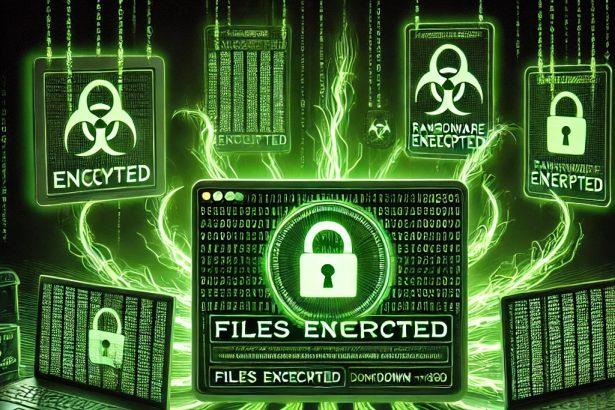Atomic ransomware is a Ransomware-as-a-Service (RaaS) variant—an evolution of the Shark RaaS—that empowers even non-technical attackers to deploy data-locking malware with ease. It encrypts user files, appending the extension .locked, and drops an executable named UNLOCK DATA.exe in each affected folder to demand ransom via a pop-up window.
Threat Overview
| Field | Details |
|---|---|
| Threat type | Ransomware |
| Encrypted file extension | .locked |
| Ransom note filename(s) | UNLOCK DATA.exe (pop-up) |
| Associated email addresses | Not disclosed |
| Detection names | Atom virus, Atom ransomware |
| Symptoms of infection | Files become inaccessible, renamed with .locked; ransom message displays with a timer |
| Damage & distribution methods | Encrypts many file types using asymmetric encryption; distributed via fake updates, spam emails, P2P networks, Trojan downloaders |
| Danger level | High – no decryption tools exist; victims must rely on clean backups |
| Removal tool | SpyHunter – Download SpyHunter |
Detailed Evaluation
How I got infected
Attackers build custom ransomware executables using the Atomic builder, choosing which file types to encrypt, setting the ransom amount, and specifying their Bitcoin wallet. The malware is then distributed through phishing emails, infected software installers, torrents, or Trojanized files.
What it does
Once executed, Atomic encrypts targeted file formats using strong asymmetric encryption and appends the .lockedextension to filenames. It drops a file called UNLOCK DATA.exe that launches a ransom message in a pop-up window with a countdown timer, warning users that the decryption key will be deleted when the time expires.
Should you be worried for your system?
Yes. Atomic ransomware poses a severe risk. It currently has no known public decryptor, and data recovery without backups is nearly impossible. The ransom demand is unpredictable, and there’s no guarantee that payment will result in a working decryption key. The malware is frequently updated to evade detection, making it even more dangerous for unprotected systems.
Ransom Note Text
A typical ransom message displayed by the UNLOCK DATA.exe executable may read:
“Time left: …
Your data is locked. To restore your files, you must pay the ransom. Contact us via the provided Bitcoin address…”
Note: The exact text may vary depending on the threat actor distributing the variant.
Manual Ransomware Removal Guide
Warning: Manual removal is complex and risky. If not done correctly, it can lead to data loss or incomplete removal of ransomware. Only follow this method if you are an advanced user. If unsure, proceed with Method 2 (SpyHunter Removal Guide).
Step 1: Disconnect from the Internet
- Unplug your Ethernet cable or disconnect Wi-Fi immediately to prevent further communication with the ransomware’s command and control (C2) servers.
Step 2: Boot into Safe Mode
For Windows Users:
- For Windows 10, 11:
- Press Windows + R, type
msconfig, and hit Enter. - Go to the Boot tab.
- Check Safe boot and select Network.
- Click Apply and OK, then restart your PC.
- Press Windows + R, type
- For Windows 7, 8:
- Restart your PC and press F8 repeatedly before Windows loads.
- Select Safe Mode with Networking and press Enter.
For Mac Users:
- Restart your Mac and immediately press and hold the Shift key.
- Release the key once you see the Apple logo.
- Your Mac will start in Safe Mode.
Step 3: Locate and Terminate Malicious Processes
For Windows Users:
- Press Ctrl + Shift + Esc to open Task Manager.
- Look for suspicious processes (e.g., unknown names, high CPU usage, or random letters).
- Right-click on the process and select End Task.
For Mac Users:
- Open Activity Monitor (Finder > Applications > Utilities > Activity Monitor).
- Look for unusual processes.
- Select the process and click Force Quit.
Step 4: Delete Malicious Files
For Windows Users:
- Press Windows + R, type
%temp%, and hit Enter. - Delete all files in the Temp folder.
- Navigate to:
C:\Users\[Your Username]\AppData\RoamingC:\Users\[Your Username]\AppData\LocalC:\Windows\System32
- Look for suspicious files related to the ransomware (random file names, recently modified) and delete them.
For Mac Users:
- Open Finder and go to Go > Go to Folder.
- Type
~/Library/Application Supportand delete suspicious folders. - Navigate to
~/Library/LaunchAgentsand remove unknown.plistfiles.
Step 5: Remove Ransomware from Registry or System Settings
For Windows Users:
Warning: Incorrect changes in the Registry Editor can damage your system. Proceed with caution.
- Press Windows + R, type
regedit, and hit Enter. - Navigate to:
HKEY_CURRENT_USER\SoftwareHKEY_LOCAL_MACHINE\Software
- Look for unfamiliar folders with random characters or ransomware-related names.
- Right-click and select Delete.
For Mac Users:
- Go to System Preferences > Users & Groups.
- Click on Login Items and remove any suspicious startup items.
- Navigate to
~/Library/Preferencesand remove malicious.plistfiles.
Step 6: Restore System Using System Restore (Windows) or Time Machine (Mac)
For Windows Users:
- Press Windows + R, type
rstrui, and hit Enter. - Click Next, choose a restore point before the infection, and follow the prompts to restore your system.
For Mac Users:
- Restart your Mac and hold Command + R to enter macOS Utilities.
- Select Restore from Time Machine Backup.
- Choose a backup prior to the ransomware infection and restore your system.
Step 7: Use a Decryption Tool (If Available)
- Visit No More Ransom (www.nomoreransom.org) and check if a decryption tool is available for your ransomware variant.
Step 8: Recover Files Using Backup
- If you have backups on an external drive or cloud storage, restore your files.
Automatic Ransomware Removal Using SpyHunter
If manual removal seems too risky or complicated, using a reliable anti-malware tool like SpyHunter is the best alternative.
Step 1: Download SpyHunter
Download SpyHunter from the official link: Download SpyHunter
Or follow the official installation instructions here:
SpyHunter Download Instructions
Step 2: Install SpyHunter
- Open the downloaded file (
SpyHunter-Installer.exe). - Follow the on-screen prompts to install the program.
- Once installed, launch SpyHunter.
Step 3: Perform a Full System Scan
- Click on Start Scan Now.
- SpyHunter will scan for ransomware and other malware.
- Wait for the scan to complete.
Step 4: Remove Detected Threats
- After the scan, SpyHunter will list all detected threats.
- Click Fix Threats to remove the ransomware.
Step 5: Use SpyHunter’s Malware HelpDesk (If Needed)
If you are dealing with a stubborn ransomware variant, SpyHunter’s Malware HelpDesk provides custom fixes to remove advanced threats.
Step 6: Restore Your Files
If your files are encrypted:
- Try No More Ransom (www.nomoreransom.org) for decryption tools.
- Restore from cloud storage or external backups.
Preventing Future Ransomware Attacks
- Keep backups on an external hard drive or cloud storage.
- Use SpyHunter to detect threats before they infect your system.
- Enable Windows Defender or a trusted antivirus program.
- Avoid suspicious emails, attachments, and links.
- Update Windows, macOS & software regularly.
Conclusion
Atomic ransomware is a potent threat leveraging the RaaS model to put powerful file-encrypting tools in the hands of cybercriminals. With no available decryption tool, the best protection lies in offline backups and robust system security. Never trust the attackers to provide a valid key even if payment is made—prioritize prevention and preparedness.




